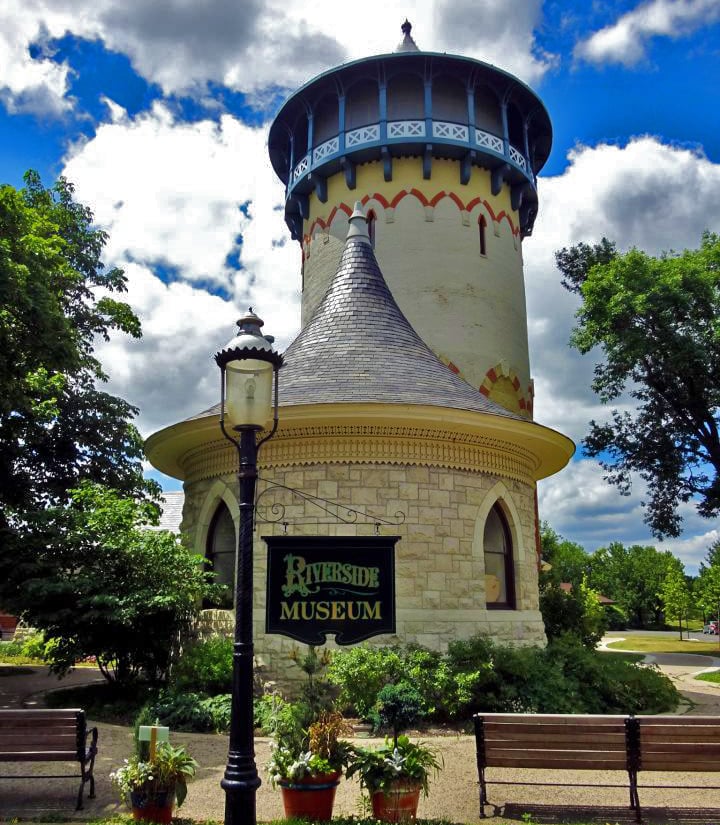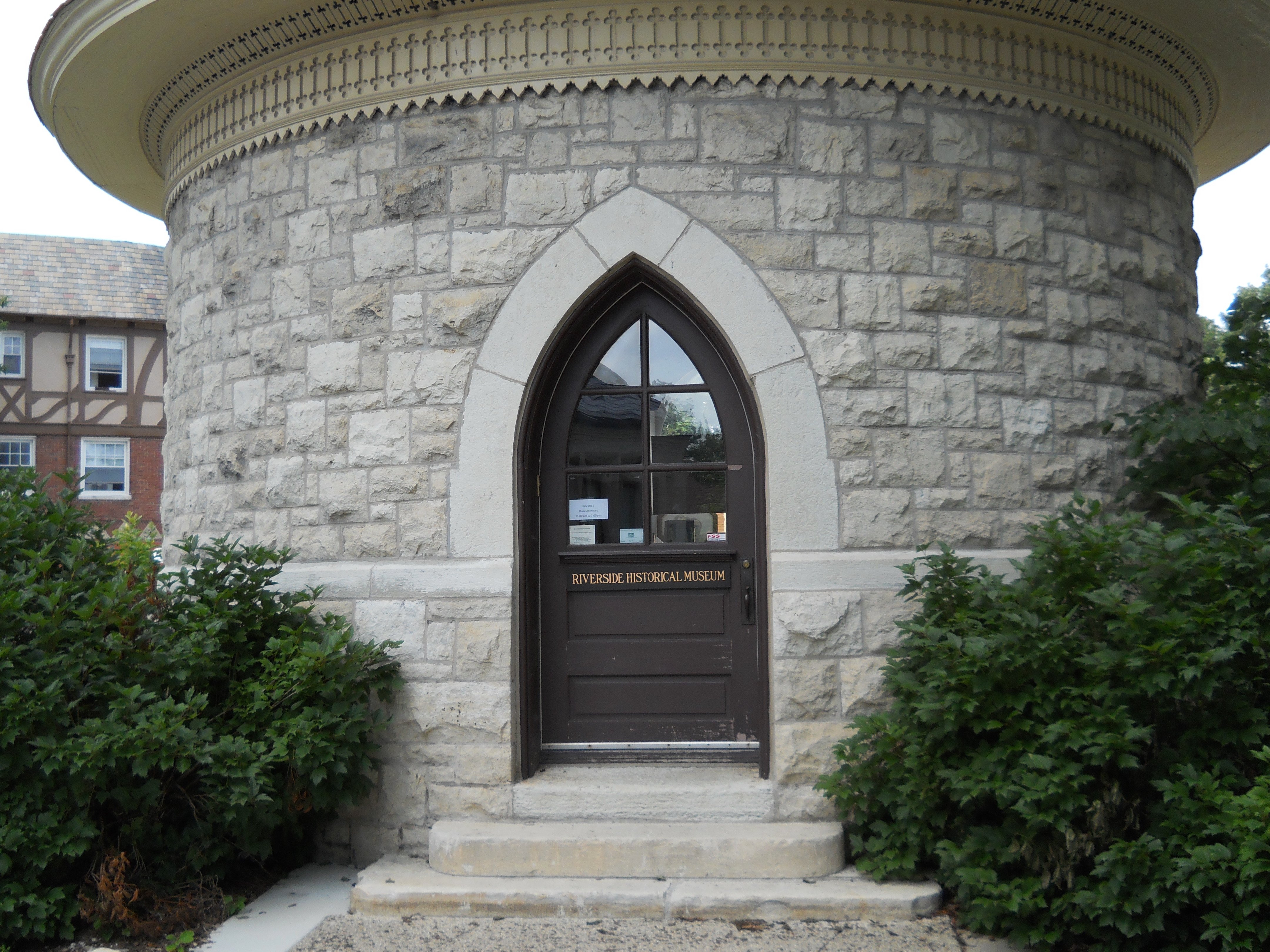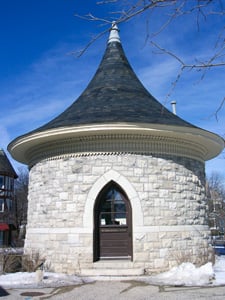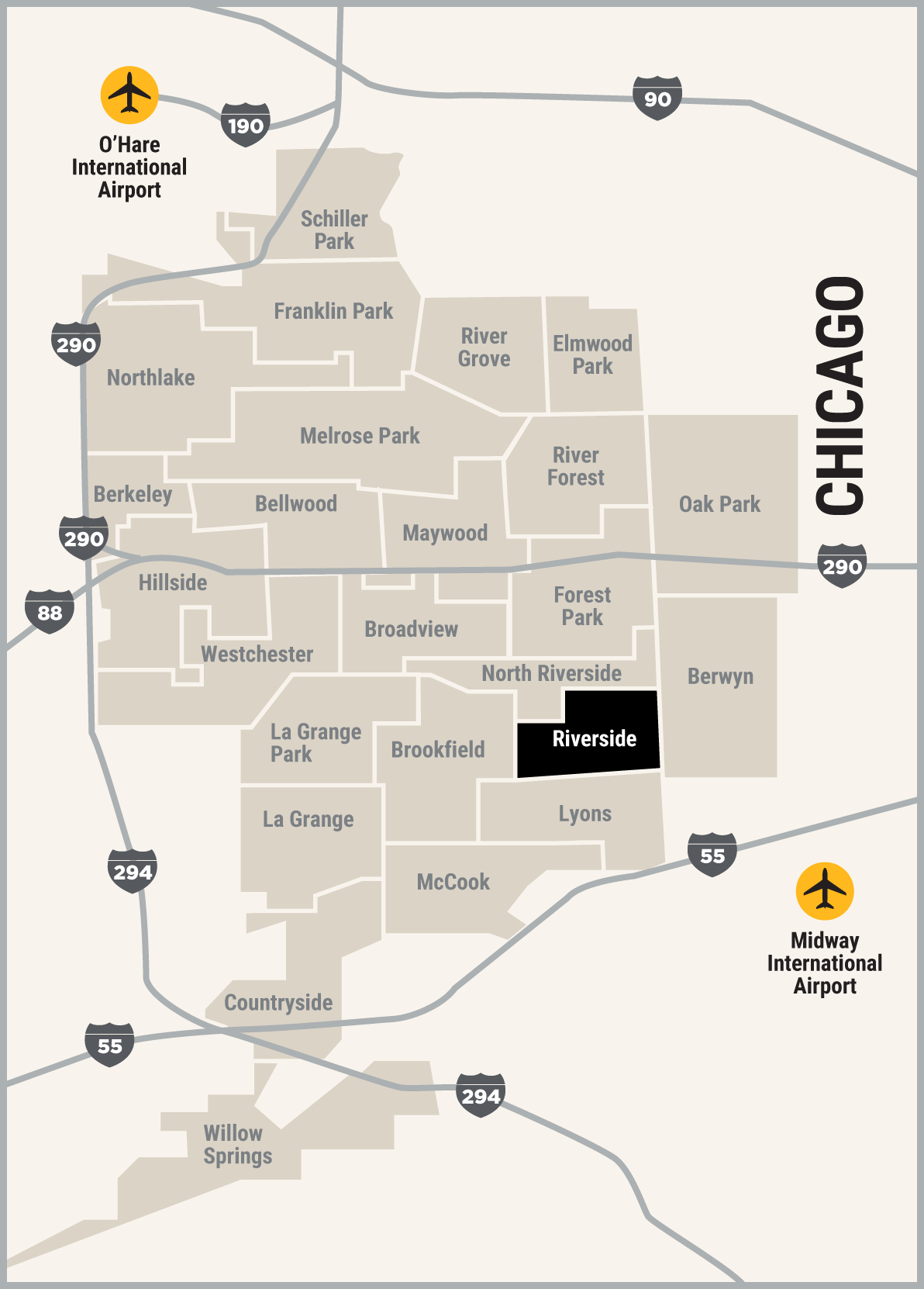Meet us where the history is in the water tower
The famous Riverside water tower went from holding water to holding history!
Inside the tower is the Riverside Historical Museum, making the structure both a piece and place of history.
Designed in 1869 by William LeBaron Jenney, a noted Chicago architect, the water tower overlooks the village of Riverside, standing tall at its center.
The water tower, with its Swiss Gothic style, isn't the only notable feat of engineering and architecture in Riverside. The village in its entirety is a National Historic Landmark, having been one of the country's very first planned communities.
The village was designed in 1968 by famed landscape architects Frederick Law Olmsted and Calvert Vaux, the design partnership behind New York City's Central Park. The pair designed Riverside in a naturalistic style, prioritizing green space and rejecting the standard grid-patterned streets in favor of streets that followed the landscape's natural curves.
Olmsted recommended Jenney to design the water tower, having previously met Jenney, then a young military engineer, during the Siege of Vicksburg, a 47-day battle in the American Civil War.
Jenney put his engineering experience to good use in designing the water tower, which was considered a technical marvel for its steam-driven pumps that provided safe drinking water for the village's residents. Construction of the water tower was completed in 1871, one year after Riverside township was founded and four years before the village was incorporated into Cook County.
Riverside's history has so much more to offer beyond the famous architects who brought it to life. Learn more about the beautiful village by stepping into history itself with a visit to the Riverside Historical Museum, located inside the Riverside water tower.
The Riverside Historical Museum is open on Saturdays from 10 a.m. to 2.pm.
There is no cost to visit the Riverside Historical Museum. You can print this map of Riverside for a self-guided walking tour of the area free of charge.
The guides here are the exhibits, which take you through the local history from the time Native Americans lived on this land to the present.
Learn about how Riverside became an architectural marvel with famed architects designing the public buildings and homes throughout the area.
The museum is located at 10 Pine Avenue just steps from the Riverside stop on the BNSF Railway. Be sure to check out the exhibit “Picturing Riverside” in the lobby of the train station!



